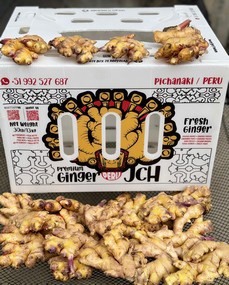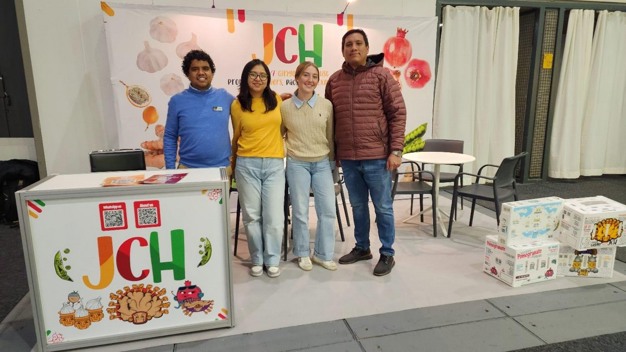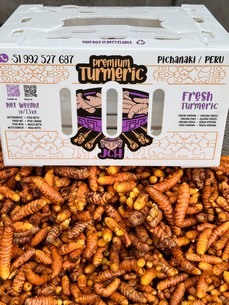Peru, Brazil, and China are the leading producers of ginger. Prices and volumes fluctuate according to climatic, phytosanitary, and logistical factors, redefining export destinations and market competitiveness. "It's been a difficult year due to high prices, limited volumes, and the fight against diseases such as Ralstonia, which continues to be a challenge for exporters," stated Jorge Chang, manager of the JCH company.
 © JCH
© JCH
Traditionally, more than 60% of Peruvian ginger was sent to Europe. That has changed. "Now, more than 60% goes to the United States. This is mainly due to the quality of the product and shorter transit times, which guarantee better conservation," Chang stated. Shipments to Miami take approximately 9 days, to Los Angeles 16 days, and to New York a little longer. In contrast, the transit time to Europe lasts around 21 days, which affects quality.
"Peru is expected to produce 70% more ginger this season than in the previous one. There's a lot more volume this year, not only in Peru but also in Brazil and China. This will drive prices down in the coming months. Currently, FOB prices are above $40 per box, but we expect them to drop to $22-25 FOB by May 2025," Chang stated.
 © JCH
© JCH
 © JCH
© JCH
A major challenge for the sector is controlling the Ralstonia bacteria, which affect product quality. "Companies have become better at controlling this disease thanks to rapid analysis kits, which can detect the bacteria without sending samples to a laboratory. In addition, testing for pesticide residues, such as aluminum oxyethyl, can now be done within a day. This facilitates decision-making in the supply chain," Chang said.
In addition to ginger, JCH also exports turmeric, pomegranates, garlic, and jolantao (Chinese pea). The company is also exploring the possibility of entering the avocado market. "Ginger accounts for more than half of our sales, but we have diversified our product offerings to remain competitive," Chang stated. In addition, 80% of their ginger exports are organic, in line with the growing demand for sustainable products.
"The past few years have been good for farmers due to high prices. However, prices might be lower in the next two years because of the increase in global supply," Chang stated.
For more information:
Jorge Chang
JCH
Pichanaqui, Peru
Tel: +51 936 263 951
Email: jorge.chang@jch.farm
www.jch.farm
Ernesto Ayala
JCH
Whatsapp: +51 992 527 687
Email: ernesto.ayala@jch,farm
www.jch.farm
